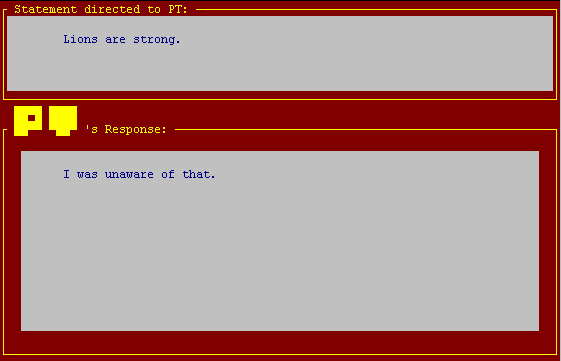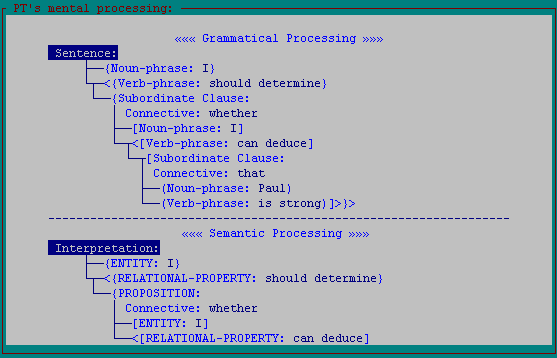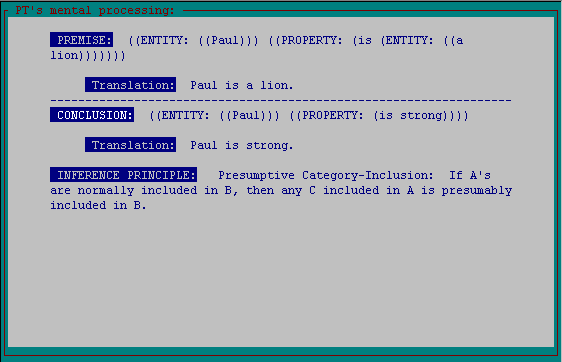Return to MODULE PAGE
Simulation theories of metaphor
Clay Beckner: Author
PT's approach to metaphor
John Barker has extended his work with mental simulation to begin a simulation approach to metaphor using PT. In such an approach, metaphors might be viewed as 'convenient fictions' or linguistic games of 'let's pretend.' In both familiarizing and defamiliarizing metaphors, we often deliberately assume things that we know are false. Similarly, when interpreting a metaphor, PT simulates the mind of someone who believes the metaphor to be literally true, and then determines what conclusions such a person would draw.
As a specific example of PT's approach, let's consider the metaphor 'Paul is a lion.' Here, Paul is not literally a lion, but is strong like a lion. Note that this example might represent an instance of either familiarization or defamiliarization. Abbe Sicard describes a case in which a child makes use of this metaphor because he does not know the word for 'strength'; such an example would fall into the general class of 'familiarizing' metaphors. More frequently, though, this would represent an example of defamiliarization; the speaker attempts to illustrate Paul's strength in a more dramatic way by bringing to mind the connotations of lions in our culture. PT is able to recognize 'Paul is a lion' as a metaphor if we precede the statement with 'It is as if'. The screen you see below shows PT's 'Entry Window', after we have typed the sentence 'It is as if Paul is a lion.'

The next window shows the computer screen after PT has processed our statement and has given a response.

PT's response, "That's intriguing," is one of the many ways that PT has of indicating that the sentence has been 'understood' and now has been included in a permanent belief set. Now let's suppose we've told PT a literal truth about lions:

Now, to see if PT is able to deduce that Paul is strong, we will type that question into the "Entry Window":
PT will now pretend that the "Paul is a lion" metaphor is literally true. The next three screens show PT's "mental processing" as she attempts to perform the deduction. Again, one way of describing PT's approach is that she simulates the mind of someone who believes the metaphor to be literally true, or alternately, she simulates a world in which the metaphor is literally true:



Finally, PT re-emerges from her mind (or world) simulation, and gives the correct response:

There are clearly a few problems with PT's current approach, which the Metaphor and Analogy Group is interested in addressing. For instance, it's important to note that speakers of a natural language are able to identify the relevant feature being highlighted in a metaphor; they quickly discard not just a literal interpretation, but also a large number of potential metaphorical interpretations. How do we get PT to sort through her knowledge base to correctly interpret the speaker's intention? Suppose that PT has hundreds of facts about lions in her database, rather than only one. PT will then conclude that Paul is strong and courageous and yellow and furry and lazy and a raw-flesh-eater, etc., without any ability to distinguish which conclusion is the most desirable. Which interpretation is correct depends on the context in which the metaphor is used. So PT will apparently need to understand metaphors on a much larger scale in order to interpret metaphors competently.
Also, we might note that preceding metaphors with the 'It is as if' tag gives users, rather than PT, the task of sorting out metaphorical statements from literal ones. Metaphor recognition is a complex problem which, again, might require PT to understand conversations on a larger scale than the sentence level.




